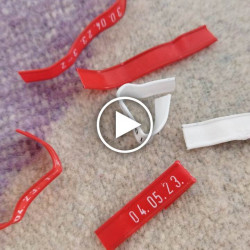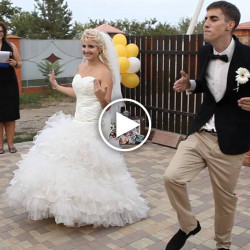How the groveling Washington Post got it so terribly wrong
On Thursday, October 25, 2024, I pronounced The Washington Post to be dead.
That was the day their wormy, billionaire owner, Jeff Bezos, crashed through the wall separating news from business — fact from fiction — and had his henchman in the newsroom pull an editorial that was set to run that weekend endorsing the person who didn’t lead an attempted coup, Kamala Harris, for president of the United States of America.
As I said in my piece:
Their failure to make this endorsement goes beyond a catastrophic lack of judgment, because we know they know that what they are doing is nothing but a gutless attempt to appease a would-be dictator, Trump.
On Friday, WaPo was at it again, and this time it cost them the services of Ann Telnaes, the newspaper’s Pulitzer Prize-winning editorial cartoonist, who said she was leaving the newspaper because it killed her cartoon (above) depicting Bezos of doing what he does best these days: falling at the fat, little feet of the despicable Trump.
Here’s how Telnaes put it on her Substack piece Friday night:
I’ve worked for the Washington Post since 2008 as an editorial cartoonist. I have had editorial feedback and productive conversations—and some differences—about cartoons I have submitted for publication, but in all that time I’ve never had a cartoon killed because of who or what I chose to aim my pen at. Until now.
The cartoon that was killed criticizes the billionaire tech and media chief executives who have been doing their best to curry favor with incoming President-elect Trump. There have been multiple articles recently about these men with lucrative government contracts and an interest in eliminating regulations making their way to Mar-a-lago. The group in the cartoon included Mark Zuckerberg/Facebook & Meta founder and CEO, Sam Altman/AI CEO, Patrick Soon-Shiong/LA Times publisher, the Walt Disney Company/ABC News, and Jeff Bezos/Washington Post owner.
While it isn’t uncommon for editorial page editors to object to visual metaphors within a cartoon if it strikes that editor as unclear or isn’t correctly conveying the message intended by the cartoonist, such editorial criticism was not the case regarding this cartoon. To be clear, there have been instances where sketches have been rejected or revisions requested, but never because of the point of view inherent in the cartoon’s commentary. That’s a game changer…and dangerous for a free press.
I encourage everybody to read the rest of her very good and short, tight explainer.
I congratulate Telnaes for taking this difficult but important stand.
I have long been one of those grumpy newspaper veterans leery of providing cover to the alleged journalists in these newsrooms who go along just to get along so they can keep collecting a dirty paycheck.
Rather than stand up to censorship, they excuse it. These are dangerous times, and if we can’t count on our press to call power to account, we really are finished.
Journalism is about one thing: Getting at the truth and reporting it with alacrity. If you know you are working at a place that’s dealing in confusing shades of gray rather than the black-and-white truth of things, then you are not a journalist, you are an enabler.
As I read Telnaes’ piece last night, and reread it again this morning, it brought to mind a sporty incident I was involved in with an editorial cartoon as the Managing Editor of Stars & Stripes 22 years ago during the run-up to the ill-fated War in Iraq.
Back then, early-March, 2003, the saber-rattling was at full pitch, and the George W. Bush administration was pushing hard behind the scenes to make sure that in the event of an invasion, our military had access to a “northern front” into Iraq to squeeze its forces and hopefully bring about a relatively quick end to any hostilities.
This northern front would only be possible if Turkey allowed the flow of some 60,000 U.S. troops through its country and across its border to the south into Iraq.
Through the years, the Turks had been prickly, on-again, off-again allies of the U.S., and were once again predictably driving a hard bargain to give us the access we alleged we so desperately needed in the event of war.
While the behind-the-scenes negotiating between the two countries was heating up, Stars & Stripes went out with an editorial cartoon in our Op-Ed pages that depicted Lucy as Turkey, Charlie Brown as the United States, and the football Lucy was holding as the northern front.
(I tried to find this darn cartoon but was unable to. And a note: Stars & Stripes is prohibited from producing its own editorials or editorial cartoons, and instead uses editorials and/or cartoons from a suite of wire services that are relevant to the troops on its Op-Ed pages.)
By publishing this cartoon, Turkish leadership took it as an inference from the United States that they, Turkey, were ready to pull out of any deal just as the U.S. (Charlie Brown) was about to finally secure the coveted front they alleged was paramount to its success in a war.
Well, this absolutely infuriated the Turks, who took their significant ire to the Pentagon. “HOW,” they screamed, “Can the United States military’s very own newspaper, Stars & Stripes, ridicule Turkey’s honor like this in the middle of these sensitive negotiations???”
Then-Secretary of Defense Donald Rumsfeld blew a fuse when he learned about the cartoon, and sent his high-ranking intermediaries in Department of Defense public affairs to come after Stars & Stripes hard for publishing this cartoon, and to let us know in no uncertain terms that we had played a part in costing the United States the coveted northern front.
Despite all their public bluster, Rumsfeld and his Pentagon knew full well there wasn’t a damn thing they could do about any of it, because Stars & Stripes was mandated by their bosses in the U.S. Congress to function as an editorially independent newspaper, with the mission of providing the same kind of news the troops and their families overseas would get if they were at home.
Most of all, it was a shining example of the difference between our two countries, in which one — the United States — had no control over a free and independent press, and the other — Turkey — believed these things could be suppressed.
This didn't stop Rumsfeld and his gang from emptying their clip at us editorial types at Stars & Stripes. They spent the first 15 minutes of the meeting lashing out at us and weren’t shy about ordering us to “stay in our lane.”
Finally, our publisher at the time decided very politely that he’d heard about enough out of them, and closed the meeting this way: “I find it sobering, and interesting, that the opinion contained in but one political cartoon can affect the fate of the most powerful military in the world’s plans to invade Iraq. Good to know who really has the power at this table ...”
Which takes me back to Telnaes’ piece where she types:
“As an editorial cartoonist, my job is to hold powerful people and institutions accountable.”
Amen.
Which should underline again just how catastrophic it is that the editorial department at The Washington Post has now gotten into the regular habit of censoring itself to appease the powerful.
Like I said, the Post is dead.
May they rest in peace.
NOW READ: Did Musk abuse the Visa program — and US workers?
D. Earl Stephens is the author of “Toxic Tales: A Caustic Collection of Donald J. Trump’s Very Important Letters” and finished up a 30-year career in journalism as the Managing Editor of Stars and Stripes. You can find all his work here.










